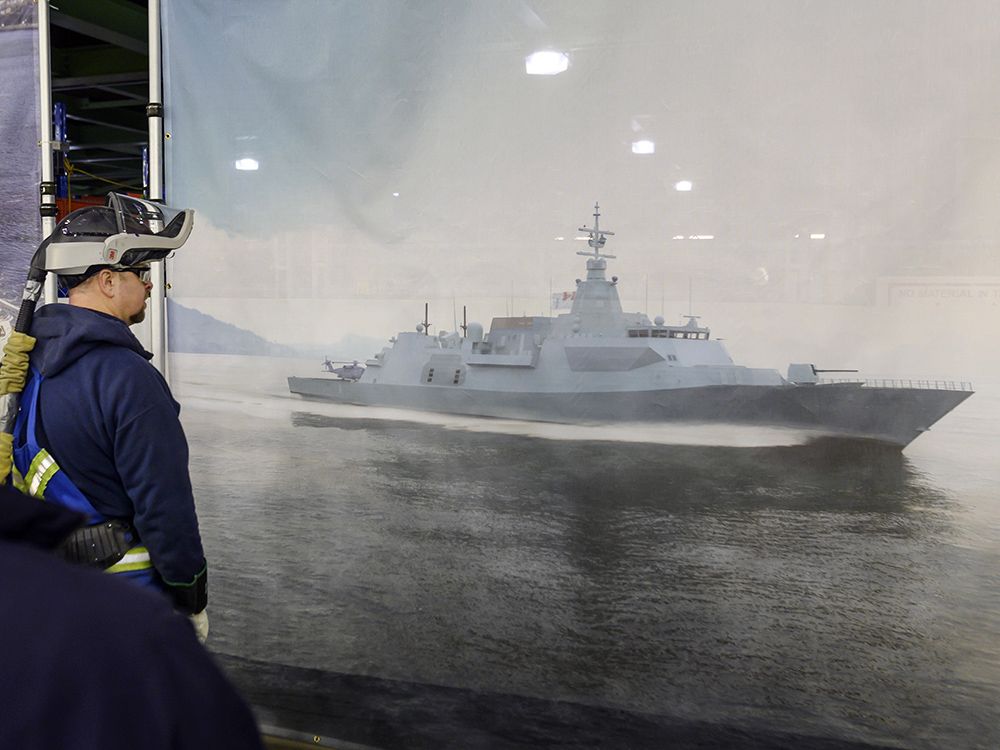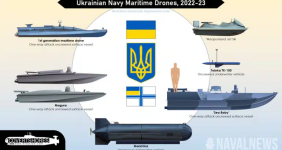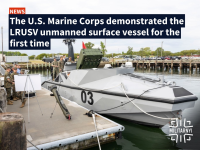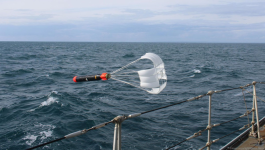Are you sure that's all avian Poo or do the inhabitants also contribute?Canada's largest goose sanctuary, based on goose shit per square foot, is the Carling Campus of NDHQ.
You are using an out of date browser. It may not display this or other websites correctly.
You should upgrade or use an alternative browser.
You should upgrade or use an alternative browser.
Canadian Surface Combatant RFQ
- Thread starter jmt18325
- Start date
- Reaction score
- 29,246
- Points
- 1,090
Are you sure that's all avian Poo or do the inhabitants also contribute?
See, at Carling you can be certain it's from geese, not people posted there, because at Carling people take dumps in the showers, not outdoors.
Colin Parkinson
Army.ca Myth
- Reaction score
- 12,630
- Points
- 1,160
GR66
Army.ca Veteran
- Reaction score
- 4,320
- Points
- 1,160
Pop one on an AOPs or Kingston/Kingston Replacement together with a containerized towed-array?
GR66
Army.ca Veteran
- Reaction score
- 4,320
- Points
- 1,160
I wonder if you could equip one with a sonobouy dispenser like was being pitched for the Firescout UAV?Pop one on an AOPs or Kingston/Kingston Replacement together with a containerized towed-array?
- Reaction score
- 4,410
- Points
- 1,120
The 1950's is calling....we found their helicopter...

 en.wikipedia.org
en.wikipedia.org

Gyrodyne QH-50 DASH - Wikipedia
Attachments
- Reaction score
- 22,518
- Points
- 1,260
Yes.I wonder if you could equip one with a sonobouy dispenser like was being pitched for the Firescout UAV?
- Reaction score
- 8,572
- Points
- 1,160
The 1950's is calling....we found their helicopter...

Gyrodyne QH-50 DASH - Wikipedia
en.wikipedia.org
but none of your nasty fossil fuels, silly gearboxes or redundant human controllers....
- Reaction score
- 8,572
- Points
- 1,160
CVN USS Gerald R. Ford - 100,000 tonnes full load
333 m long
78 m wide at the flight deck
Complement: 4539
T1 ULCC - 68,000 tonnes light, 510,000 tonnes full load
380 m long
68 m beam
Complement: 18-24?
ESD USNS Montfort Point - 34,500 tonnes displacement
233 m long
50 m beam
Complement: 34
Boka Vanguard - 91,000 tonnes displacement
275 m long
27 m wide
Complement: 40
EPF USNS Apalachicola - 2,300 tonnes displacement
103 m long
28.5 m beam
Complement: 0-41 (Autonomous Capable)
MUSV USNS Ranger - 673 tonnes
59 m long
10 m beam
Complement: 0 (Autonomous)
LRUSV -
11.7 m long
4? m beam
Complement: 0 (Semi-Autonomous)
544 LRUSV / ULCC
380 m / 11.7 m = 32 stem to stern
68 m / 4 m = 17 athwartships
32 x 17 = 544
The immediately possible.....
Boka Vanguard - 91,000 tonnes displacement
275 m long
27 m wide
Complement: 40
LRUSV / Boka Vanguard
~ 20 stem to stern
~ 5 athwartships
= 100 on one level
stacked? 2 to 4 levels?

333 m long
78 m wide at the flight deck
Complement: 4539
T1 ULCC - 68,000 tonnes light, 510,000 tonnes full load
380 m long
68 m beam
Complement: 18-24?
ESD USNS Montfort Point - 34,500 tonnes displacement
233 m long
50 m beam
Complement: 34
Boka Vanguard - 91,000 tonnes displacement
275 m long
27 m wide
Complement: 40
EPF USNS Apalachicola - 2,300 tonnes displacement
103 m long
28.5 m beam
Complement: 0-41 (Autonomous Capable)
MUSV USNS Ranger - 673 tonnes
59 m long
10 m beam
Complement: 0 (Autonomous)
LRUSV -
11.7 m long
4? m beam
Complement: 0 (Semi-Autonomous)
544 LRUSV / ULCC
380 m / 11.7 m = 32 stem to stern
68 m / 4 m = 17 athwartships
32 x 17 = 544
The immediately possible.....
Boka Vanguard - 91,000 tonnes displacement
275 m long
27 m wide
Complement: 40
LRUSV / Boka Vanguard
~ 20 stem to stern
~ 5 athwartships
= 100 on one level
stacked? 2 to 4 levels?

- Reaction score
- 6,555
- Points
- 1,040
Something like that looks simple but there is a lot of support equipment required that isn't shown in a sexy tweet, and things like basic precautions for ammunition safety usually is the result of a lot hard lessons learned (on top of existing commercial rules AOPs is built to, which also are updated based on LL from disasters frequently involving loss of life/property). All those things look great if you have no idea what the design, build, training, manning and integration implications are.Pop one on an AOPs or Kingston/Kingston Replacement together with a containerized towed-array?
Stuff like this is why I hate CANSEC and other trade shows, where they send the operators but not anyone on the technical side. Finally got to one (outside of CANSEC) earlier this year, and the fancy booths were sexy, but there were a bunch of non-sexy things on display that addressed real, current issues we are having on existing capabilities with fully engineered solutions. When we dragged the requirement folks over, and explained to them why it was awesome, we got actual support, but just happened to be there as a fluke.
Halifax Tar
Army.ca Fixture
- Reaction score
- 12,259
- Points
- 1,260

John Ivison: The uncontrolled military program plundering the public purse, desperate for adult attention
John Ivison: Canada’s defence spending is an embarrassment, yet one massively expensive program appears to have next to no cost controls
Colin Parkinson
Army.ca Myth
- Reaction score
- 12,630
- Points
- 1,160
I wouldn't compare the naval war in the Black Sea to the Pacific. First of all you need to get to the theatre (Littoral) first to deploy the toys and then support that effort over thousands of miles of ocean and protect that logistical support. Plus you have to also contend with a large hostile fleet of non-combatants which may or may not be armed with some of the toys we seen deployed in the Black Sea.
John Ivison: The uncontrolled military program plundering the public purse, desperate for adult attention
John Ivison: Canada’s defence spending is an embarrassment, yet one massively expensive program appears to have next to no cost controlsnationalpost.com
- Reaction score
- 6,412
- Points
- 1,090
He's not wrong on a lot of things in there. This is what happens when no one is held accountable or responsible for a project that is recognizable by the public.
John Ivison: The uncontrolled military program plundering the public purse, desperate for adult attention
John Ivison: Canada’s defence spending is an embarrassment, yet one massively expensive program appears to have next to no cost controlsnationalpost.com
- Reaction score
- 18,105
- Points
- 1,010
One thing he is wrong on is that it is nearly impossible to directly compare ship building costs in the USN with anywhere else.
So much of the ship’s cost is hidden as Government Furnished Equipment that it is impossible to get an apples=apples comparison.
You can’t just go: “Ah ha! Constellation Class cheap! CSC expensive!” If we tried to build or buy built Constellations, I am betting the price would get pretty eye wateringly high pretty fast….
So much of the ship’s cost is hidden as Government Furnished Equipment that it is impossible to get an apples=apples comparison.
You can’t just go: “Ah ha! Constellation Class cheap! CSC expensive!” If we tried to build or buy built Constellations, I am betting the price would get pretty eye wateringly high pretty fast….
Last edited:
FSTO
Army.ca Fixture
- Reaction score
- 6,169
- Points
- 1,210
How much of the money directed towards CSC is also being used to upgrade (or replace) the infrastructure to support the fleet? The LBTF is likely in there, plus all the TD costs for the project team, the sailors who will have to go to the states for Aegis training. Then there is the costs to upgrade the shipyards, the wages of the crew for 30 years, the O&M for the ships and infrastructure the list goes on and on. None of those costs are quoted when the price of the "cheaper" foreign option is brought forward.
- Reaction score
- 6,555
- Points
- 1,040
Don't forget 30% contingency, which is somewhere in the realm of $20B.How much of the money directed towards CSC is also being used to upgrade (or replace) the infrastructure to support the fleet? The LBTF is likely in there, plus all the TD costs for the project team, the sailors who will have to go to the states for Aegis training. Then there is the costs to upgrade the shipyards, the wages of the crew for 30 years, the O&M for the ships and infrastructure the list goes on and on. None of those costs are quoted when the price of the "cheaper" foreign option is brought forward.
And IP for manuals, training plans and all the other important things that you need to do on top of just delivering a hull with stuff in it.
Hopefully they at least don't cut the sparing/initial provisioning costs; AOPS and JSS PMOs did that and effectively offloaded a lot of it to AJISS and MEPM. Not even things like spare valves, overhaul kits etc because it wasn't in the list of 6M PM spares, and the OEM assured them things never break.
- Reaction score
- 23,286
- Points
- 1,360
Indeed.One thing he is wrong on is that it is nearly impossible to directly compare ship building costs in the USN with anywhere else.
So much of the ship’s cost is hidden as Government Furnished Equipment that it is impossible to get an apples=apples comparison.
You can’t just go: “Ah ha! Constellation Class cheap! CSC expensive!” If we tried to build or buy built Constellations, I am betting the price would get pretty eye wateringly high pretty fast….
Folks try to do that with other programs too, aircraft, etc. “But the USAF bought XX F-## for $xxxM…why are ours more?” (Because the program accounting is different. Canadian projects/programs are usually costed in all-up costs, which include platforms, support systems and infrastructure and in-service support costs for a finite period, often 20-years for a major capital project eg.). They then divide those total cost by number of platforms and arrive a a calculated ‘unit-cost’ (which isn’t unit cost in any meaningful sense, but rather an apportioned share of total program/project costs.
- Reaction score
- 8,572
- Points
- 1,160
Indeed.
Folks try to do that with other programs too, aircraft, etc. “But the USAF bought XX F-## for $xxxM…why are ours more?” (Because the program accounting is different. Canadian projects/programs are usually costed in all-up costs, which include platforms, support systems and infrastructure and in-service support costs for a finite period, often 20-years for a major capital project eg.). They then divide those total cost by number of platforms and arrive a a calculated ‘unit-cost’ (which isn’t unit cost in any meaningful sense, but rather an apportioned share of total program/project costs.
I suppose we could blame the politicians and their press. Gotcha politics demands the team a makes team b look as bad as possible. So even when team a tells the truth about the cost of an item team b will respond that they forgot about this, that and the other therefore they are either liars or incompetents or both. The system at large seems to be so gun shy now that they publish the largest numbers demanded and fail to publish the itemized cost.
To be fair, if the real costs of the hull were itemized and published separately from the GFE and separately from the ordnance and separately from the service contract the press wouldn't report them.
- Reaction score
- 6,555
- Points
- 1,040
We also (really inconsistently) sometimes makes adjustments to some kind of future dollar values with assumptions for inflation, vice actual in year costs.Indeed.
Folks try to do that with other programs too, aircraft, etc. “But the USAF bought XX F-## for $xxxM…why are ours more?” (Because the program accounting is different. Canadian projects/programs are usually costed in all-up costs, which include platforms, support systems and infrastructure and in-service support costs for a finite period, often 20-years for a major capital project eg.). They then divide those total cost by number of platforms and arrive a a calculated ‘unit-cost’ (which isn’t unit cost in any meaningful sense, but rather an apportioned share of total program/project costs.
So you may take $10M today, and say it's in fact the equivalent to $15M in 2040 dollars, and then project that cost. It might make sense on some kind of CPA kind of accrual accounting thing, but when you do the budget requests you ask for whatever it will cost you that year. Sometimes they do the opposite and adjust future costs to current in year cost, sometimes they use actual costs, so it's confusing.
Normally when you do cost predictions on the project side, if you have a recurring item (like buying the same widget) you just take the current cost and apply some kind of annual assumed inflation, so that your year to year cost projections take into account normal increases over time for the same kind of work. The obvious example for that is labour and material costs. The amount of steel you need is pretty fixed, but you still want to account for normal increases over time. The amount of labour will go down over time on predictable rates (and plateau when they hit peak efficiency) but the overall costs may still increase as labour rates go up.
For example, first time you do something might take 10 hours, second time 9 hours, and then eventually get down to 6 hours the tenth time. But if your labour rate goes from $80/hour to $120 over 20 years you may pay more in dollar figures for the 10th one (realizing that the dollar is worth less 20 years out).
Trying to find a good way to explain big dollar costs on a long term strategic project is a challenge, but the way we do it inflates the sticker shock by a lot. If you told someone the cost of ownership of a $50k car was $250k (with potentially another $80k of repairs) that wouldn't really make sense to them, but that's essentially what we have to do under TBS costing rules.
Similar threads
- Replies
- 5
- Views
- 8K
- Replies
- 15
- Views
- 38K







